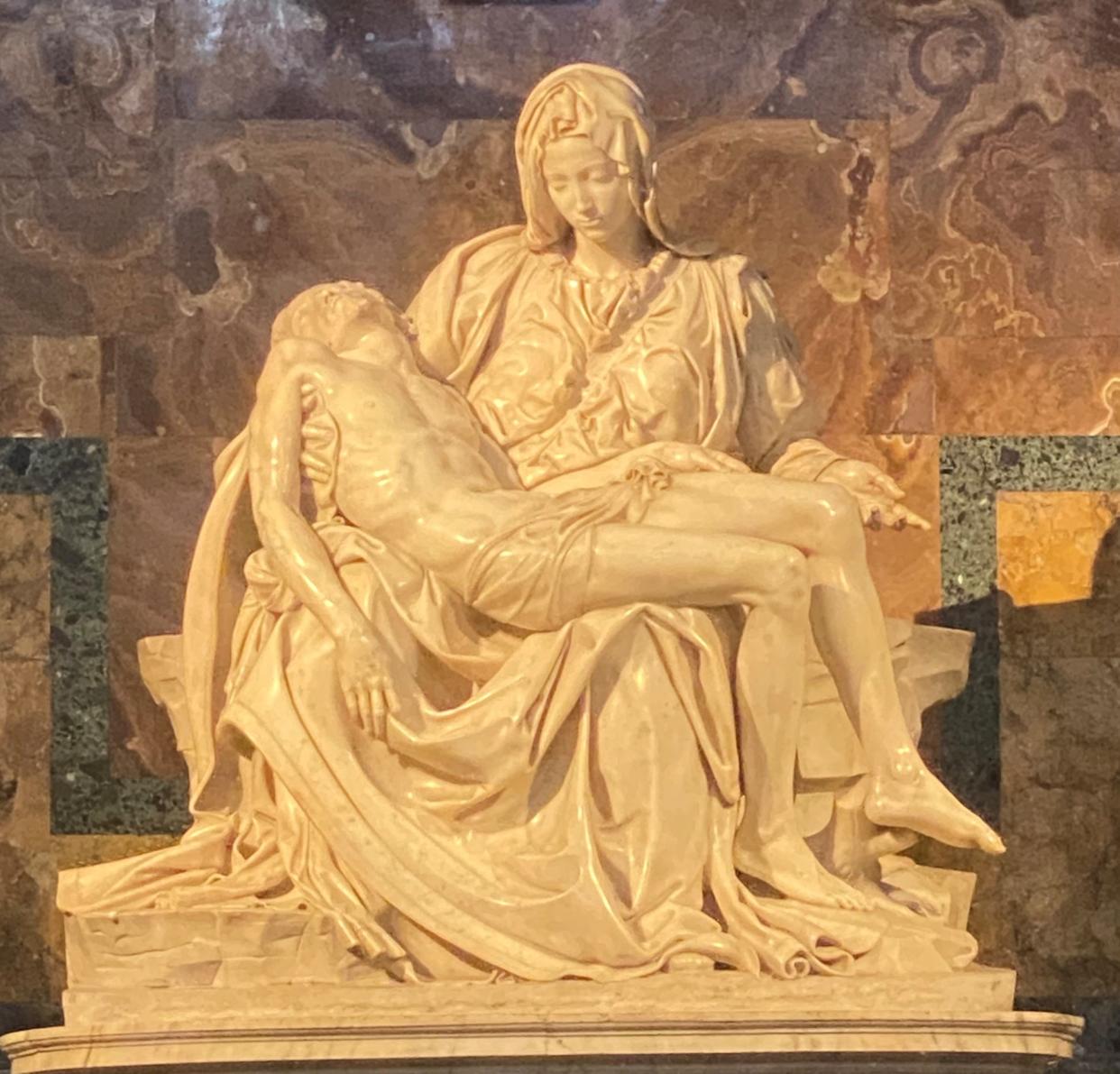Opinion: Author took years before realizing Michelangelo made no mistake with Pieta
I always thought there was something wrong with Michelangelo’s Pieta.
You can see the statue in your mind’s eye: After watching her son tortured to death on a cross, a mother cradles his broken body.
I first saw it as a six-year-old in 1965 at the Vatican Pavilion of the New York World’s Fair. During the fair, millions patiently waited on long lines to view the Pieta, but all I can remember is looking down at the cool mobile walkway as it moved me along.
It wasn’t until I was a 20-year-old student in the University of Dallas’s Rome program that I noticed the flaw: The expression on the woman’s face is all wrong.
She’d just been forced to helplessly stand by and watch as her son endured the most horrific death imaginable. And yet, look at her face. Any Hollywood actress playing the role would throw her head back and scream in anguish. But Michelangelo chose to give her an almost peaceful expression of sorrowful acceptance. Why? The question haunted me for years.
I came across the phenomenon again decades later while watching a documentary about the Kennedys. Shortly after Lyndon Johnson was sworn in as president, he called President Kennedy’s mother, Rose, from Air Force One as it flew from Dallas to Washington D.C. with her son’s body aboard. An audio recording of the conversation plays during the documentary, and Rose Kennedy’s composure is stunning. She essentially consoled LBJ and had the presence of mind to call him “Mr. President” mere hours after the murder of her son.

Later in the documentary, the Kennedys are shown gathered together for a group interview shortly after Bobby Kennedy’s assassination. Rose spoke for her stricken family, and once again exhibited otherworldly, Pieta-like composure.
I had kids of my own by then, so I had some idea of the hellish grief she must have suffered. How did she maintain such composure? I couldn’t for the life of me understand the source of that kind of strength.
I did a little research and found that her son, Sen. Ted Kennedy, stated at Rose’s eulogy, “She sustained us in the saddest times – by her faith in God, which was the greatest gift she gave us – and by the strength of her character, which was a combination of the sweetest gentleness and the most tempered steel.”
She wrote in her autobiography, “The most important element in human life is faith. If God were to take away all His blessings, health, physical fitness, wealth, intelligence and leave me with but one gift, I would ask for faith – for with faith in Him and His goodness, mercy and love for me, and belief in everlasting life, I believe I could suffer the loss of my other gifts and still be happy.”
My mother also had the gift of faith. It sustained her through a difficult life including the almost unbearable sudden death of my infant brother, Johnny.
When mom was in her 80s, her neighbor, a retired psychiatrist and vocal atheist, would visit and try to talk her out of her faith. For the sake of friendship, mom put up with it for a while. But one day, she’d had enough and threw the woman out of her apartment shouting, “I’m happy, and you’re miserable. Leave me alone!”
I’ve experienced moments of faith twice. The first – while I was just looking out my office window – lasted about 15 minutes. The second came during a work crisis and lasted about two days. Both times, all my anxieties vanished, and I was suffused with faith-filled, peaceful feelings I’d never experienced before and wanted desperately to continue. I pray daily for a return to that beautiful place.
I saw the Pieta for the third time last summer while participating in another UD Rome program. I stared at it for a long while and wept because this time I believed I understood the expression on Mary’s face, and I knew it was no mistake. Michelangelo was simply portraying the transcendent peace that comes from dwelling in the kingdom of the faithful.
Here's wishing you and yours a peaceful New Year.
Peter Merkl is a longtime resident of Corpus Christi.
This article originally appeared on Corpus Christi Caller Times: Writer realizes years later the profound truth in Michelangelo's Pieta
